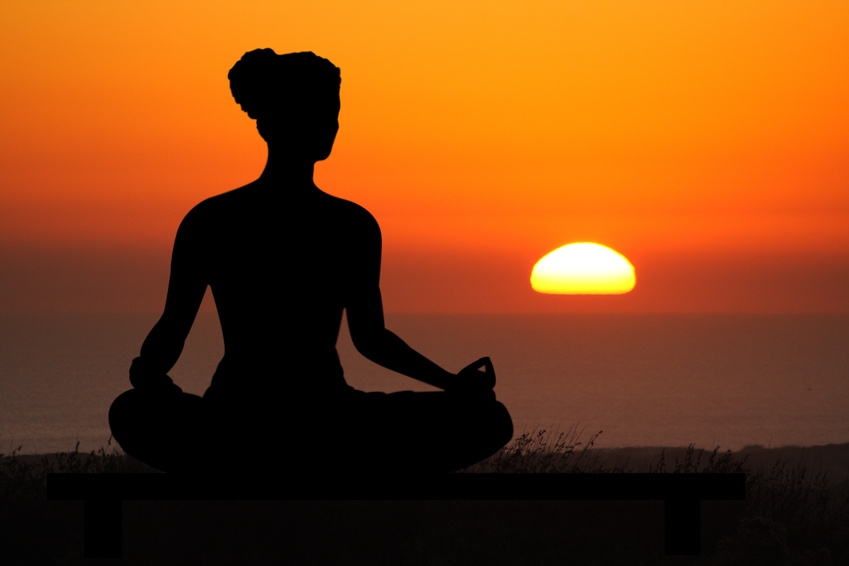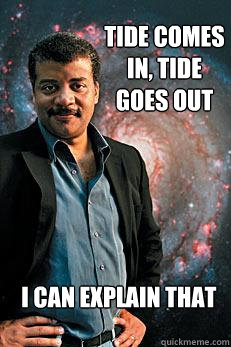How an Atheist Practices Secular Buddhism
What science has taught me about being skeptical of the outer world, Buddhism has taught me about being skeptical of the inner world. Both require critical thinking, and both require evidence. While science turns those methods outward, Buddhism turns those methods inwards. What differs are the tools.
In science, to evaluate the world and universe around us, we use a variety of tools from critical thinking, skepticism, mathematics, collections of data, telescopes, microscopes, etc, and peer review. All of these help us view what we are studying in an objective manner to ferret out educated interpretations, bolstered by evidence. Scientific claims must have firm evidence that can be tried and tested by others.
Similarly, the proof is in the pudding, so to speak, for secular Buddhists as well. To learn to be as critical and skeptical of the inner world, to determine what is accurate, is trickier than in science, because dealing with one’s mind is subjective. Yet, the Buddha stories reveal valuable methods we use to explore how our inner worlds operate, how our minds deceive, cause angst and worry, happiness and anger, etc. Getting peer review doesn’t work the same when you’re dealing with the inner landscape, but sharing experiences with other secular Buddhist helps us for reality checks.
So, why bother with inner skepticism and critical awareness? In a nutshell to be happier and less unhappy, and to be well grounded in reality. What’s in the secular Buddhist toolkit to learn to do this?
Buddhist mythology uses the term enlightenment, but I prefer waking up. We wake up to reality, come to grips with everything just as it is and no more, because of critical awareness, because in refining the mind, we eliminate our suffering and the suffering we heap on others.
Atheists/agnostics, in my humble opinion, have a head-start in this naturally. Many are already critical thinkers naturally, and many are also skeptical, which is likely why they rejected the religion of their childhoods in the first place. Also, many atheists/agnostics are familiar with scientific methodology, so it’s a matter of turning these methods inward, and being willing to be wrong about one’s previous perceptions of self and seeing how the mind plays games.
Atheists, like everyone else, live in a swirl of reactionary responses that often causes angst. We get caught in circular thinking and anger, pulled under by sadness and depression, overwhelmed by happiness and joy, then disappointed by expectation and delusion. We all want to be happy. We all want to not suffer. Buddhism teaches us how to get out of our own way, to alleviate our suffering through mindfulness, inner observations, and a whole lot of letting go. It’s an amazing process of discovery! No magical, no exaggerated claims. No levitation:-)
What are the tools the Buddhist stories offer?
- Mindfulness (learned through meditation)
- Ethics
- Letting go
We react to our world a lot more mindlessly than we realize. Until you start really paying attention, you don’t realize this. Being mindful, present in each and every moment, takes a lot more effort than you may realize, but the pay off is high. Meditation is the tool we use to learn and refine mindfulness. I know, most of us think we are doing this already, but put yourself to the test to see if that is really true.
Now, before you cringe at the word meditation, I must point out here I’m not talking about transcendental meditation, which I never understood, and I’m not talking about meditation that allows you to reach altered states of consciousness, create psychic powers, or some other silly non-sense. This is not warm, fuzzy meditation to bring on bliss or ultimate happiness. In fact, I’ll tell you straight up, I don’t like meditating! Well, most of the time. It depends, and it depends on a lot.
Mindfulness meditation brings you in direct view of your thoughts, emotions, agitation, fatigue, or whatever you are experience in that moment, and it changes throughout the meditation, because you are dynamic and change constantly. What I discover every time I meditate is that I’m easily bored, and I have a hard time sitting with boredom. Yet, when you have nothing else to do but explore boredom, you learn.
Meditation is not a way to avoid feelings. On the contrary, it teaches one to be with an emotion, to separate it from the thoughts that create a story around the emotion. It’s fascinating how thoughts and emotions are actually separate yet support one another. End the thoughts, and the emotion fades. Let the thoughts in, and the emotion flourishes. Now, I’m digressing. That is a whole blog in itself.
As we learn mindfulness through meditation, we start paying closer attention to every moment in our lives. We stop pushing away, and instead simply let go. We learn about our emotional reactions, and instead become responsive. We learn to be more objective about how we interact in the world.
This helps in heaps in regard to ethics. As most atheists realize, ethics are not handled down by god. But ethics or lack thereof affects how much suffering we create for ourselves and others. It’s all about being mindful of the consequences of our actions, not just externally, but internally. If we become mindful of how we feel when we lie, we can see we are creating more trouble for ourselves than it’s worth. When we understand stealing not only causes suffering to others, but ourselves through fear of being caught, guilt, and other concerns, we are less likely to do it.
On the other hand, if we behave ethically, we don’t suffer ill consequences and we don’t cause others to suffer. Mindfulness of our reactions can gradually be turned into our being responsive instead. In secular Buddhism, ethics is of utmost importance, not because the Buddha said so, but because unethical actions create inner turmoil and outer unrest. Behaving morally, at the least does no harm, and even sometimes causes relief or happiness. Think about it, explore it. Do Einstein thought experiments for different scenarios.
Mindfulness also gradually reveals the craving we need to let go of, the expectations that cause us disappointment, the attachment to activities that are harmful to us, even attachment to many of the things at first glance cause pleasure, but on closer inspection reveal craving and suffering below the surface. We even end up, through mindfulness, close observation and study of the inner landscape, letting go of our previous conception of the self, and the ego that causes us so much pain.
There is no dogma you have to follow in secular Buddhism to learn any of this. It’s all about discovering and developing refined awareness that is turned inward, just as you do when looking outward. It’s about catching yourself in beliefs that cause you angst, and seeing how your thoughts keep you angry, when you could simply let it go, and learning to be with an emotion like sadness and seeing it’s but a simple emotion. We don’t have to believe the stories our minds create to keep us in a fit of rage, and we can let go of those things we cling to most.
As Master Yoda said (yes I said Yoda!): “Fear is the path to the dark side. Fear leads to anger, anger leads to hate, hate leads to suffering.”
This can be observed and tested. Begin watching how your mind operates. Learn to just sit, focus on your breath, in and out, and see how your mind, emotions, and physical sensations interrupt. Just note it, then go back to the breath. You’ll be surprised at how active your mind is, how senseless so many of the thoughts are, how pesky thoughts and emotions can be, how restless or quiet you may be, just sitting, observing your inner world. When it comes down to it, this is the secular Buddhist practice. You’ll see the things that are best let go of. You’ll see what you crave, cling to, and how that creates inner discord. You’ll learn to be skeptical of the stories your mind tries to tell.
 “Do not dwell in the past, do not dream of the future, concentrate the mind on the present moment.” ~ Buddha
“Do not dwell in the past, do not dream of the future, concentrate the mind on the present moment.” ~ Buddha
Recommended Reading:


